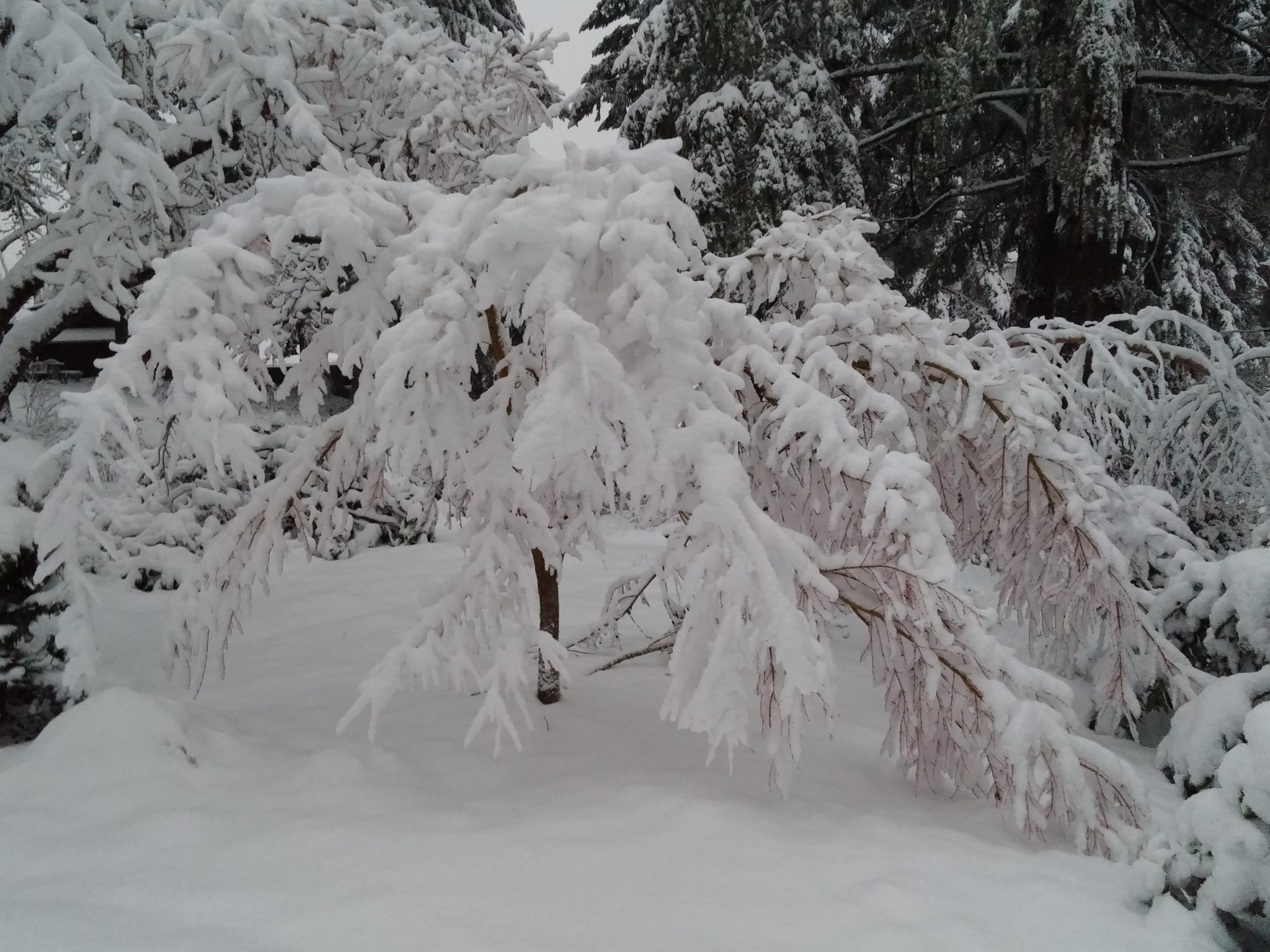
Prepare Your Trees For Winter Storms
Portland-area winter storms can bring strong winds, ice and wet snow that take a heavy toll on our urban forest. Strong winds uproot entire trees from rain-saturated soils. Large branches, weighed down by heavy, wet snow break and either fall or are hung up in the canopy. More pliant trees and shrubs bend low to the ground under the weight of snow and ice before breaking. This was the fate of the Japanese maple in the above photograph. To prepare your trees for winter storms, there are preventative actions you can take to minimize the likelihood of tree failures in winter weather.
Plant the right tree
Our Portland area enjoys a generally mild maritime climate. We are situated in the Willamette valley, between the coastal and Cascades mountain ranges, in which cold air tends to pool. In addition to planting trees known to thrive in our USDA plant hardiness zone 8b and Sunset climate zone 6, there are several microclimates within our Portland area to consider when planting. Within the Willamette valley, we have varied topography punctuated by small hills and smaller river valleys. Wind generally increases in speed as it moves up a hillside, so Council Crest trees in the west hills may experience higher wind gusts than neighborhood trees at lower elevations. The cold air is able to drain down these hills, meaning less frost in the west hills than on the valley floor in Hillsboro, for example. North and east-facing slopes are consistently colder than south and west-facing slopes. Elevation also influences the amount of frozen precipitation that falls to the ground. East Portland communities bear the brunt of easterly winds from the Columbia gorge, which also frequently bring much colder inland temperatures and ice. If you live in one of these areas, plant trees that can handle these weather elements.
In the right place
Consider your property’s microclimate when siting trees for planting. Shaded areas will stay frozen longer than areas in the sun. The northernmost tree in a planting group will bear the brunt of northerly prevailing winds. Plant trees far enough away from one another to prevent branches of neighboring trees from rubbing against each other during wind events. Our ubiquitous winter rains saturate soils that can become unstable anchoring points for roots. Plant trees in the right place, in accordance with their drainage requirements.
Maintain your investment
Structural pruning, hazard reduction pruning, and clearance pruning your trees before the storms begin can reduce the damage to your trees and property from winter storms. Structural pruning promotes a more balanced growth form by removing crossing and rubbing branches, removing secondary leader stems and reducing end weight. Hazard reduction pruning removes dead wood, broken branches and flawed growth. Clearance pruning removes growth which may infringe on structures, walkways and streets.
Jeremy Fry, ISA (International Society of Arboriculture) Certified Arborist and company owner, has attained ISA Tree Risk Assessment Qualification. He has been trained to identify tree risk, including tree failure likelihood and potential damage caused by a failure. After reviewing your trees, he can recommend preventative measures to reduce tree risk from winter storms.
When a wet, heavy snow does cause branches of small ornamental trees and shrubs to bend to the ground, gently shaking the snow from the flexible branches can reduce the stress on the wood to minimize breakage. This should be done from the ground, standing to the side of the branch, using a long-handled tool and only if it can be done safely, keeping in mind hazards from overhead branches and falling packed snow.
We do not know what weather this winter has in store for us. With the right planting strategy and preventative pruning approach, you can prepare your trees and property for winter weather.


